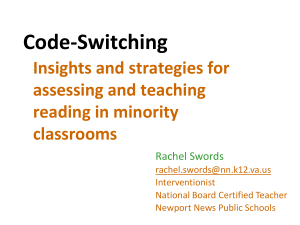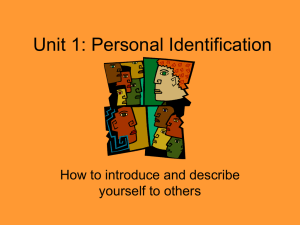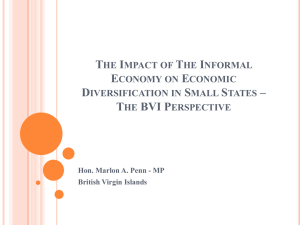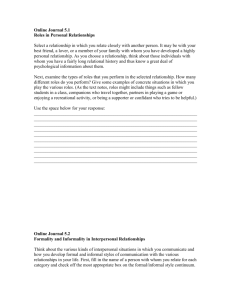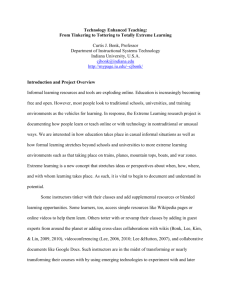Grammar Strategies for Linguistically Diverse Writers The book
advertisement
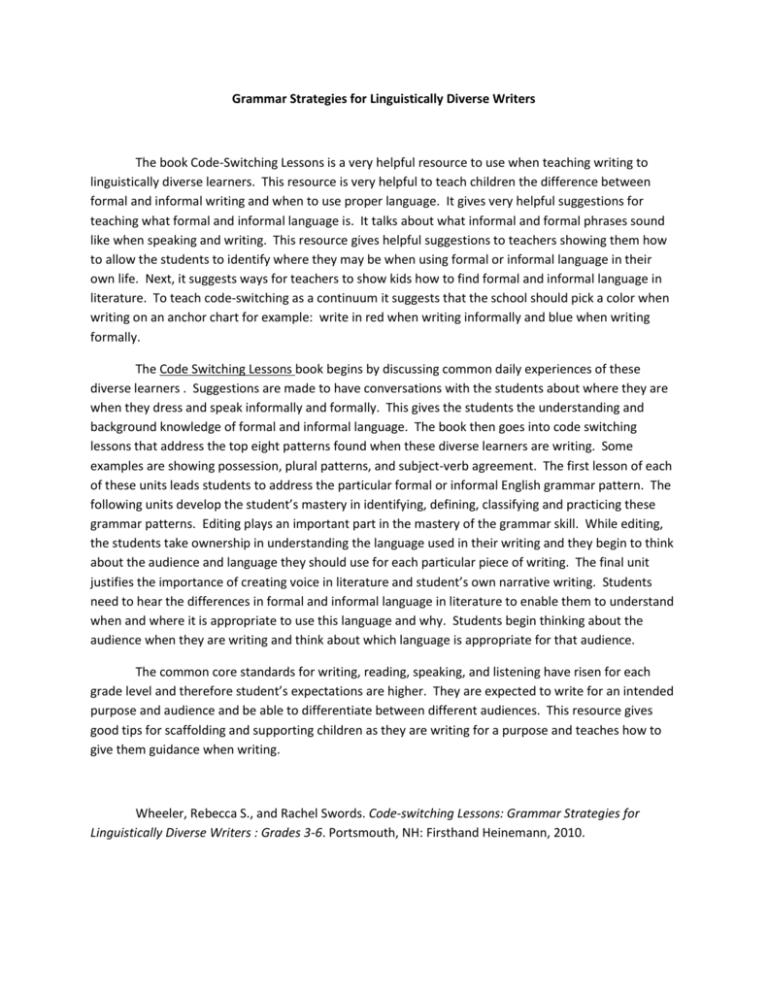
Grammar Strategies for Linguistically Diverse Writers The book Code-Switching Lessons is a very helpful resource to use when teaching writing to linguistically diverse learners. This resource is very helpful to teach children the difference between formal and informal writing and when to use proper language. It gives very helpful suggestions for teaching what formal and informal language is. It talks about what informal and formal phrases sound like when speaking and writing. This resource gives helpful suggestions to teachers showing them how to allow the students to identify where they may be when using formal or informal language in their own life. Next, it suggests ways for teachers to show kids how to find formal and informal language in literature. To teach code-switching as a continuum it suggests that the school should pick a color when writing on an anchor chart for example: write in red when writing informally and blue when writing formally. The Code Switching Lessons book begins by discussing common daily experiences of these diverse learners . Suggestions are made to have conversations with the students about where they are when they dress and speak informally and formally. This gives the students the understanding and background knowledge of formal and informal language. The book then goes into code switching lessons that address the top eight patterns found when these diverse learners are writing. Some examples are showing possession, plural patterns, and subject-verb agreement. The first lesson of each of these units leads students to address the particular formal or informal English grammar pattern. The following units develop the student’s mastery in identifying, defining, classifying and practicing these grammar patterns. Editing plays an important part in the mastery of the grammar skill. While editing, the students take ownership in understanding the language used in their writing and they begin to think about the audience and language they should use for each particular piece of writing. The final unit justifies the importance of creating voice in literature and student’s own narrative writing. Students need to hear the differences in formal and informal language in literature to enable them to understand when and where it is appropriate to use this language and why. Students begin thinking about the audience when they are writing and think about which language is appropriate for that audience. The common core standards for writing, reading, speaking, and listening have risen for each grade level and therefore student’s expectations are higher. They are expected to write for an intended purpose and audience and be able to differentiate between different audiences. This resource gives good tips for scaffolding and supporting children as they are writing for a purpose and teaches how to give them guidance when writing. Wheeler, Rebecca S., and Rachel Swords. Code-switching Lessons: Grammar Strategies for Linguistically Diverse Writers : Grades 3-6. Portsmouth, NH: Firsthand Heinemann, 2010.



